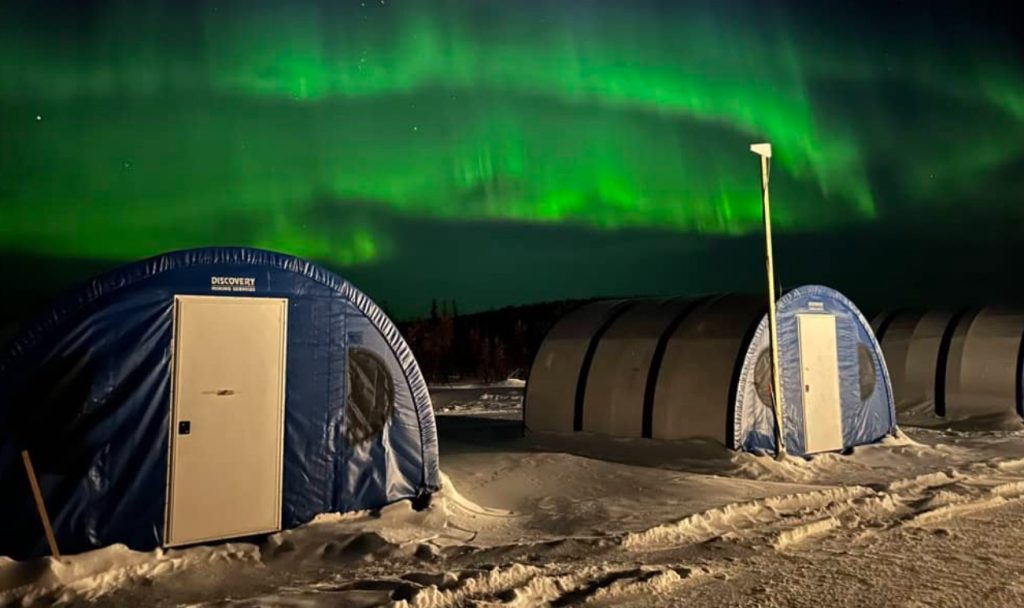CanAlaska Uranium drilling Cree East Project, Saskatchewan

CanAlaska Uranium Ltd. [TSXV: CVV; OTCQX: CVVUF; FSE: DH7] reported the start of drilling as part of the 2025 winter exploration program on the Cree East project in the southeastern Athabasca Basin. The drilling program will focus on a series of new high-priority targets designed based on the results of historical drilling and re-interpreted geophysical surveys.
One drill has been mobilized to the project site and drilling has begun with the first holes focused on Target Area B. The Cree East Project is located approximately 35 km northwest of the Key Lake Mine and Mill Complex. The project is currently 100%-owned by CanAlaska and is being sole-funded by Nexus Uranium Corp. [CSE: NEXU] under an option earn-in agreement with the company.
The 2025 winter drill program on the Cree East project will consist of one diamond drill operating to achieve an estimated six to eight target tests. Historically, the Cree East project has had over $20 million in exploration activity consisting of multiple geophysical surveys and 91 diamond drillholes since 2006 by CanAlaska.
Over the past year, CanAlaska has reviewed and re-processed the historical geophysical and diamond drilling information to generate a series of newly identified high-priority targets on the Cree East project. This drill program represents the first drill program on the Cree East project in over a decade.
The drill program will initially focus in Target Area B, where historical drilling intersected clay alteration that extends throughout the entire sandstone column with pyrite alteration and associated uranium enrichment in the lowermost sandstone. In this target area, the sandstone alteration is associated with wide intersections of brecciation and faulting, causing over 50 metres of vertical unconformity displacement. Hydrothermal alteration persists deep into the basement rocks.
Several additional targets have been identified for the drill program in Areas A, I, and an untested conductor based on the re-interpreted geological and geophysical model from historical drilling results. These targets are designed to test interpreted graphitic stratigraphy on both the footwall and hanging wall side of a large and rigid banded iron formation.
The company believes the competency contrast of graphitic stratigraphy against the large rigid banded iron formation creates the potential for post-Athabasca structural reactivation. This structural reactivation can create important conduits for the movement of uranium-bearing hydrothermal fluids that interact with graphitic structural zones. The program is expected to take eight to 10 weeks to complete.
The Cree East project could see up to $19 million worth of exploration expenditures completed on the project.
CanAlaska CEO, Cory Belyk, commented, “The structure, alteration and uranium mineralization encountered in prior exploration programs is reminiscent of tier 1 uranium deposits like Cigar Lake and McArthur River. The Cree East project contains all the necessary ingredients to form one of these tier 1 deposits and the current target inventory and initial drilling plan is designed to follow up on the prior results and test the Cree East project for a tier 1 deposit.
“A new exploration team at CanAlaska has been busy reviewing the targets and developing new high priority targets for testing in 2025. We are very pleased with the outcome of this work and we look forward to delivering exploration results to our new partner Nexus Uranium. Cree East is a very large project located just 35 kilometres from the Key Lake Mill at time when new tier 1 feed is needed for Key Lake.”
CanAlaska Uranium holds interests in approximately 500,000 hectares (1,235,000 acres) in the Athabasca Basin and is focused on exploration and discovery of high-grade unconformity uranium deposits. The company is actively advancing the Pike Zone discovery – a new high-grade uranium discovery on its West McArthur Joint Venture project in the eastern Athabasca Basin.
In addition, the company has several other uranium-focused exploration programs. CanAlaska deploys a hybrid project generator model, focusing on the acquisition and sale of prospective projects, while also executing exploration programs on CanAlaska’s most strategic land holdings.
The company’s extensive portfolio has attracted international mining companies, including Cameco Corp. and Denison Mines as active partners.
